When I compiled a list of natural Easter egg dyes to try with my kids years ago, hibiscus was said to make a beautiful pink. However, when I actually tested it the egg turned dark green. Oops. Some of the other suggestions didn’t work at all, and some were just meh. (I’m looking at you lemon peels.)
That’s why after experimenting with everything from carrots to raspberries and grape juice, I’ve compiled a list of ingredients that consistently yield beautiful, vibrant colors. You’ll find them below along with the specific recipes I used.
Also, when the hunt is over, you can use the eggs to make this homestyle potato salad recipe with bacon and egg.
But first, you might be wondering . . .
Why not use food coloring?
When I was a kid, I vividly remember eating hard boiled eggs that were blue, red, and yellow. The dye tabs we’d used weren’t intended to soak through, but they did, and that’s just one of the reasons I choose a natural approach.
- As covered in this post, food dyes have been linked to attention and behavioral problems in children, certain types of cancer, and other problems.
- The U.S. isn’t as stringent as Europe in regulating food dyes. They require foods which contain dyes to come with warning labels and have banned many of the ones that are still in use within the United States.
- Some children are sensitive to extremely small amounts of food dye.
If you’d like to take a deep dive into the health effects of each individual dye, I recommend the Center for Science in the Public Interest’s 68 page report, Food Dyes: A Rainbow of Risks.
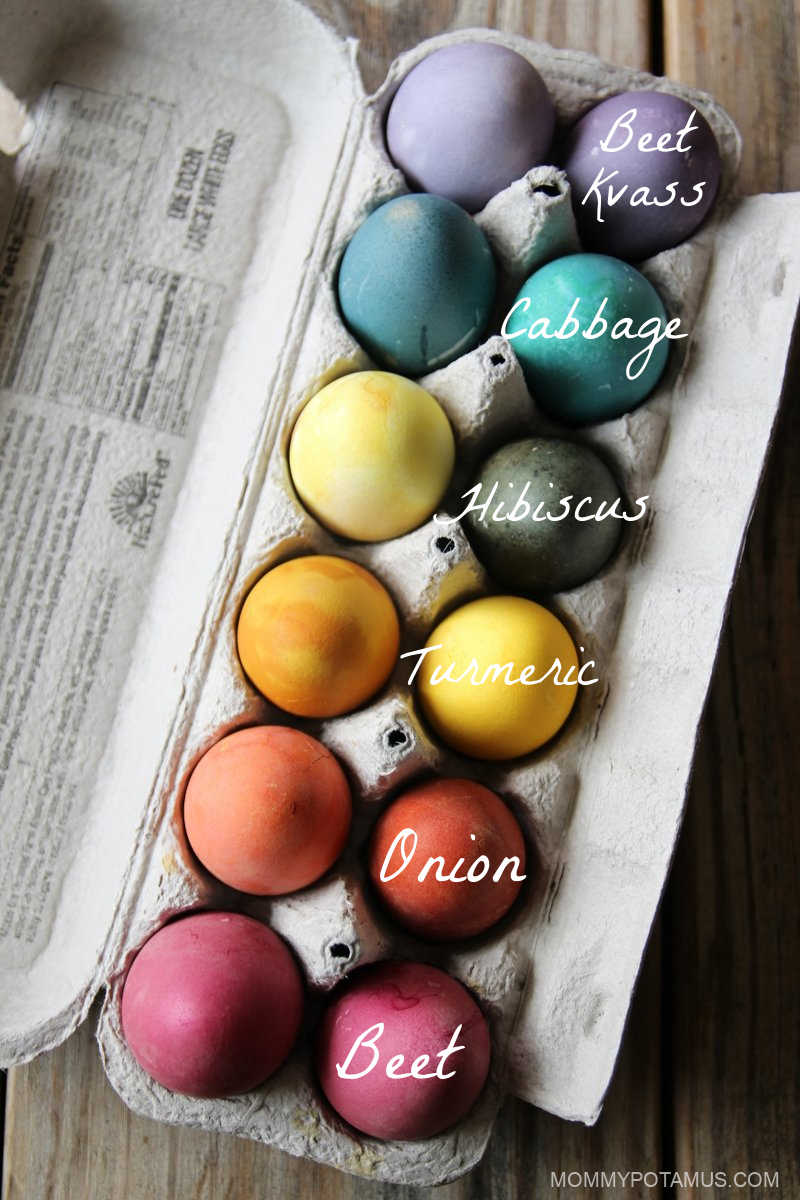
How To Dye Easter Eggs Naturally
Below you’ll find my approach for creating beautiful, vibrant colors using everyday ingredients. The instructions are divided into three sections:
- Individual recipes for different colors of dye
- My three step-process for coloring Easter eggs, which includes how to make the dye, how to prepare the eggs, and instructions for using the dye
- Answers to frequently asked questions
- Where to buy natural Easter egg dye if you don’t want to make your own
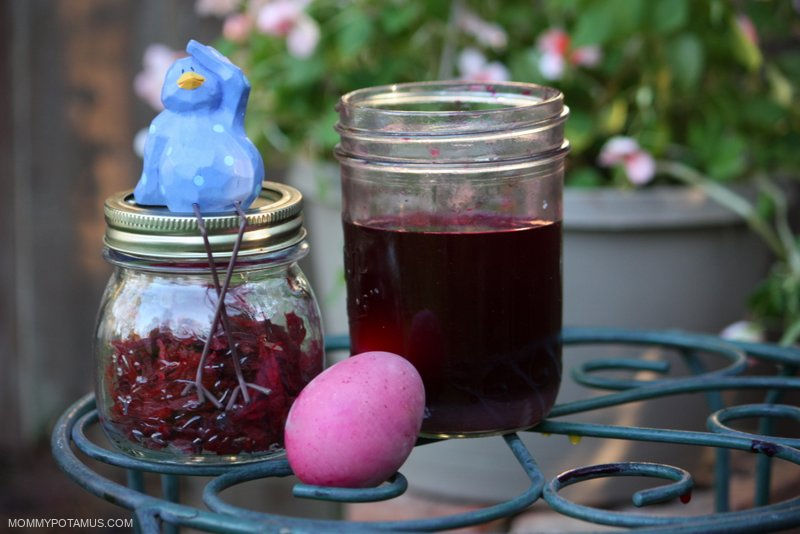
To Dye Easter Eggs Pink, You’ll Need:
- 2 cups water
- 2 cups peeled, grated beets
- 1-2 tablespoons white vinegar
See the “Three-Step Process for Dyeing Easter Eggs Naturally” section below for specific instructions on how to make the dye, prepare the hard boiled eggs, and then color the eggs.

To Dye Easter Eggs Orange, You’ll Need:
- 2 cups yellow onion skins
- Enough water to cover skins by 1 inch
- 1-2 tablespoons white vinegar
Scroll down to the “Three-Step Process for Dyeing Easter Eggs Naturally” section below for detailed instructions.
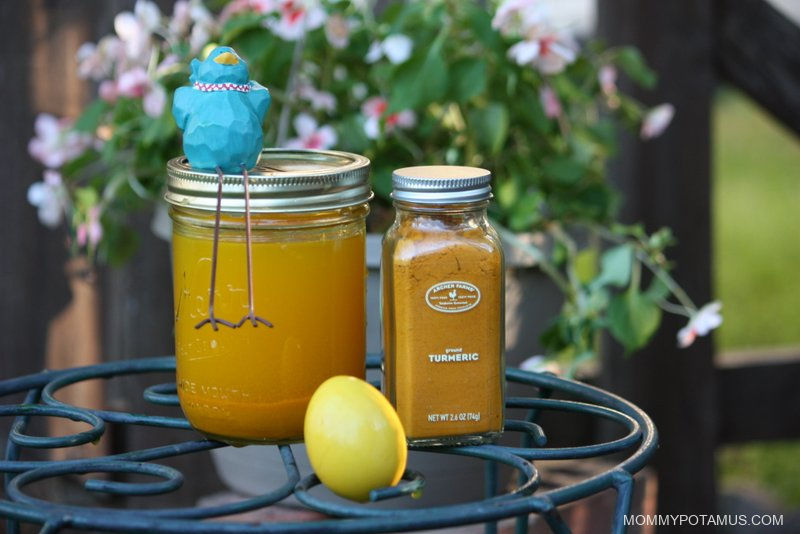
To Dye Easter Eggs Yellow, You’ll Need:
- 2 cups water
- 1 tablespoon turmeric
- 2 tablespoons vinegar creates
This recipe creates a vibrant yellow on white eggs and a deep gold on brown ones. The egg to the left of the one marked “turmeric” above is an example of what a brown egg looks like.
Other options: Strongly brewed chamomile tea creates a soft yellow.
See the “Three-Step Process for Dyeing Easter Eggs Naturally” section below for step-by-step instructions.

To Dye Easter Eggs Green or Blue, You’ll Need:
- 2 cups shredded purple cabbage
- Enough water to cover cabbage by 1 inch
- 1-2 tablespoons vinegar
Brown eggs will turn green and white eggs will turn blue.
Other options: Strongly brewed hibiscus tea (with one tablespoon vinegar per cup) will create the dark green pictured in the photo at the top. Blueberries will create a slightly marbled blue color.
Step-by-step instructions can be found in the “Three-Step Process for Dyeing Easter Eggs Naturally” section below.
To Make Purple Easter Egg Dye, You’ll Need:
- 1-2 cups homemade beet kvass – as much as is needed to cover the eggs.
When using kvass no additional dye preparation is needed, so in the instructions below you can skip the “Three-Step Process for Dyeing Easter Eggs Naturally” section and move straight to “Directions for Boiling & Coloring The Eggs”
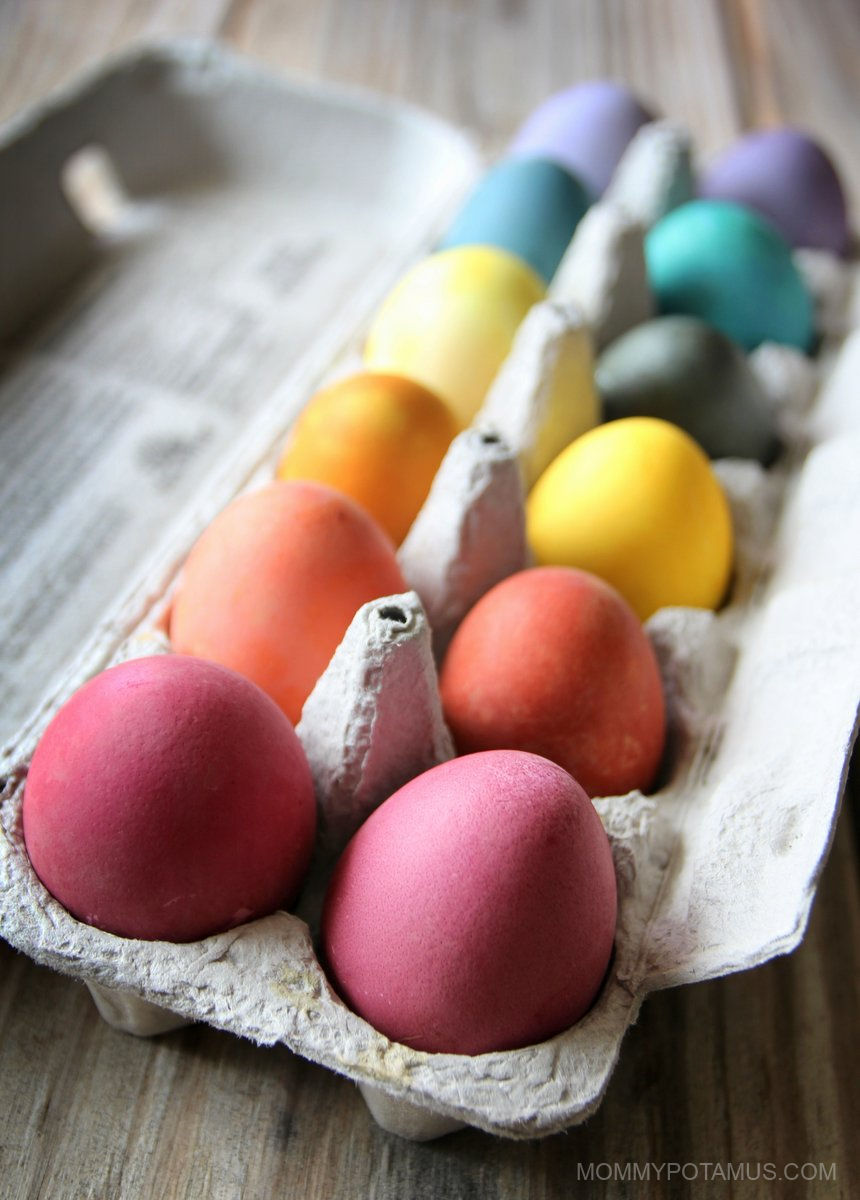
My Three-Step Process for Dyeing Easter Eggs Naturally
In this three-step process you’ll make all the dyes first, then boil and prepare the eggs, and finally dye the eggs.
You’ll need:
- Natural dye materials (shredded beets, turmeric, etc)
- Filtered water
- 1-2 tablespoons vinegar per dye color
- Pots for simmering ingredients and boiling eggs
- Mesh strainer
- Small bowls or mason jars (order mason jars here)
- Eggs
- Coconut or olive oil (optional – for adding luster to eggs)
Step 1: Making Natural Easter Egg Dye:
- Bring the dye matter (cabbage, turmeric, etc.) and water to a boil. Turn heat down to low and simmer, covered, for 15-60 minutes until desired color is reached. Keep in mind that the eggs will be several shades lighter so it’s best to go for deep, rich hues.
- Remove the egg dye from heat and let it cool to room temperature.
- Pour the dye through a mesh strainer into bowls/mason jars and add 1 tablespoon of vinegar for each cup of dye liquid.
- Add hard boiled eggs to the dye and place it in fridge until the desired color is reached. I started mine in the early afternoon and let them infuse overnight.
Step 2: Directions for Boiling & Coloring The Eggs:
- Add the eggs to a medium pot and cover them with cold water. Bring the water to a hard boil, then turn off the heat and cover the pot. After 10 minutes, place the eggs in a bowl of cold water and let them sit until they’re cool to the touch.
- Drain the bowl and replace with warm, soapy water – I use non-toxic castile soap. Gently rub the eggs with a washcloth or your thumb to remove oils that prohibit the natural dyes from adhering effectively to the egg shell.
Step 3: Coloring The Eggs
- Lower the eggs into the dye and place them in the fridge. Soak until your desired color is reached. (We usually soak ours overnight.)
- When the eggs are ready scoop them out with a slotted spoon and place them on a drying rack or an upside down egg carton.
- Naturally-dyed eggs have a matte finish. If you’d like to add a little luster, rub with a drop or two of coconut or olive oil.
Need a quicker and easier option?
If you want to make naturally-dyed eggs without spending extra time boiling fruits and veggies, this kit looks like a good option. The dyes are made from fruits, herbs and veggies – all you need to add is hot water.
It may be a good idea to order soon just to make sure it arrives on time.
Frequently Asked Questions
Below are the most common questions I’ve received since first posting this tutorial. If you have one I haven’t answered yet please let me know!
Can the dyes be stored overnight and used the next day?
Yep!
Can I draw on the eggs with a wax crayon before dyeing them?
We haven’t tried this but I don’t see a reason not to as long as the crayons are non-toxic.
Do dyes change the flavor of the eggs?
Nope!
What do you think about coloring Easter eggs with silk?
Over the past few couple of I’ve received a few questions about whether it’s safe to dye eggs with men’s silk ties. Although silk dyed eggs are beautiful and silk is definitely natural, some of the dyes used to color ties are toxic. Scientific American recommends wearing a mask or working in a well-ventilated area while making them, and advises against eating them.
Products Mentioned In This Post
Continue reading How To Dye Eggs Naturally With Everyday Ingredients...
from Mommypotamus https://ift.tt/2nAxgyk


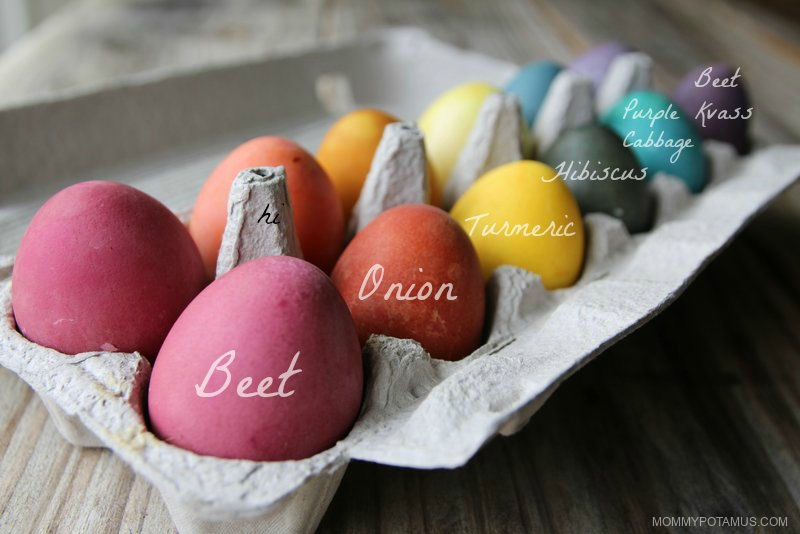

No comments: